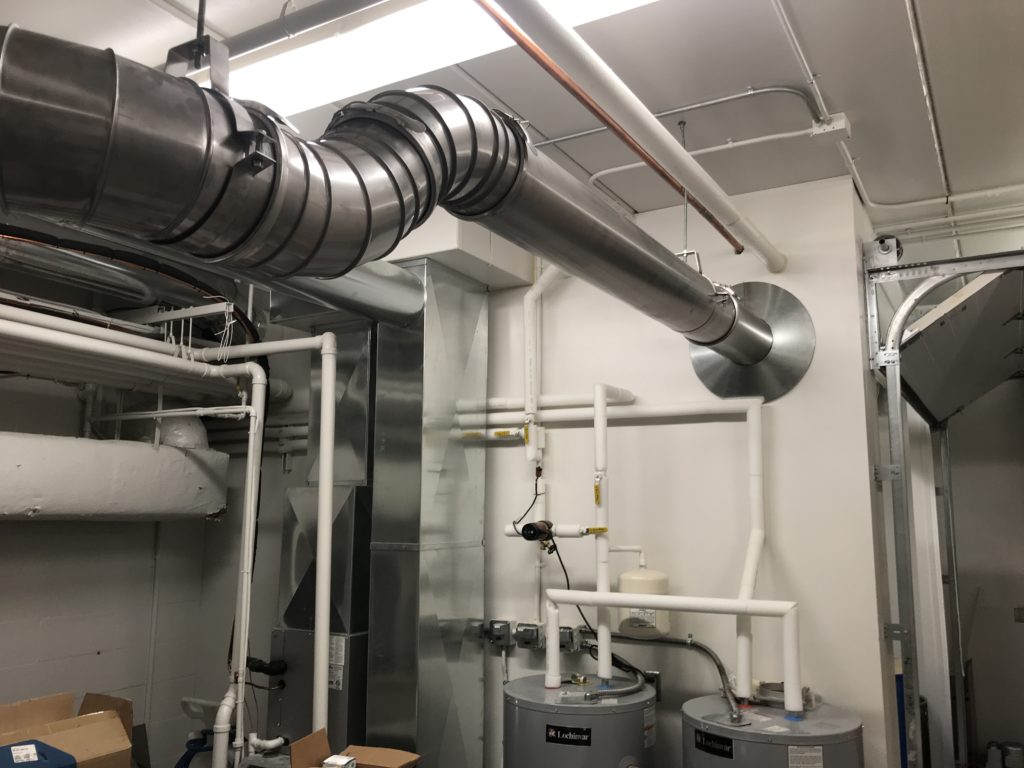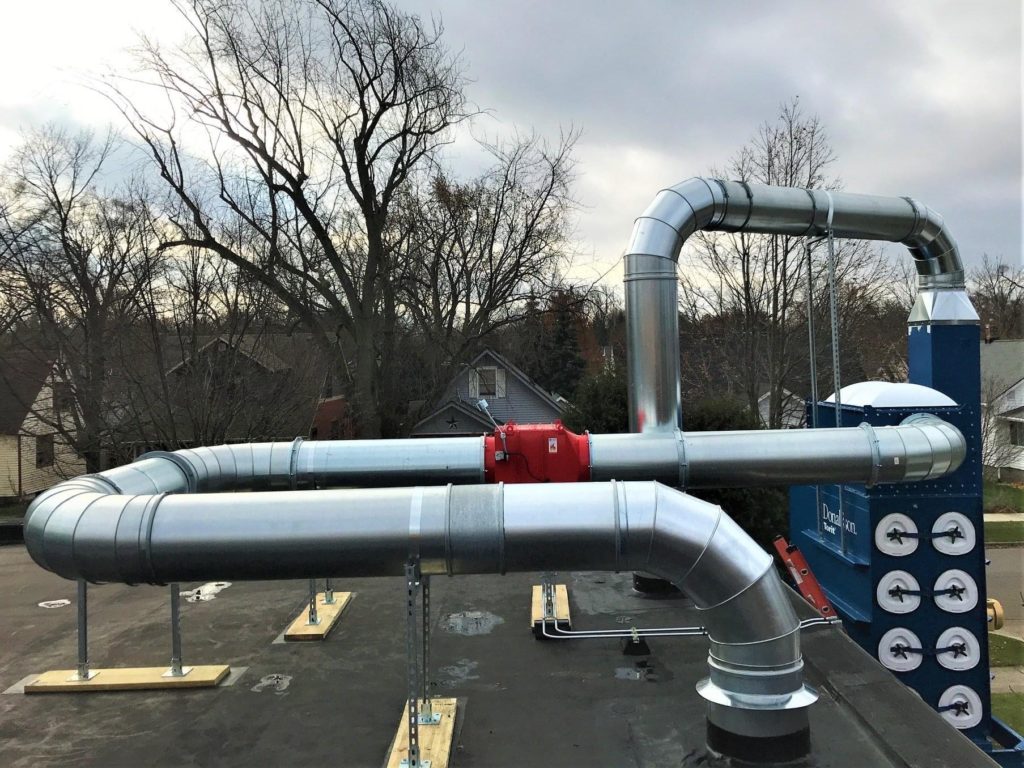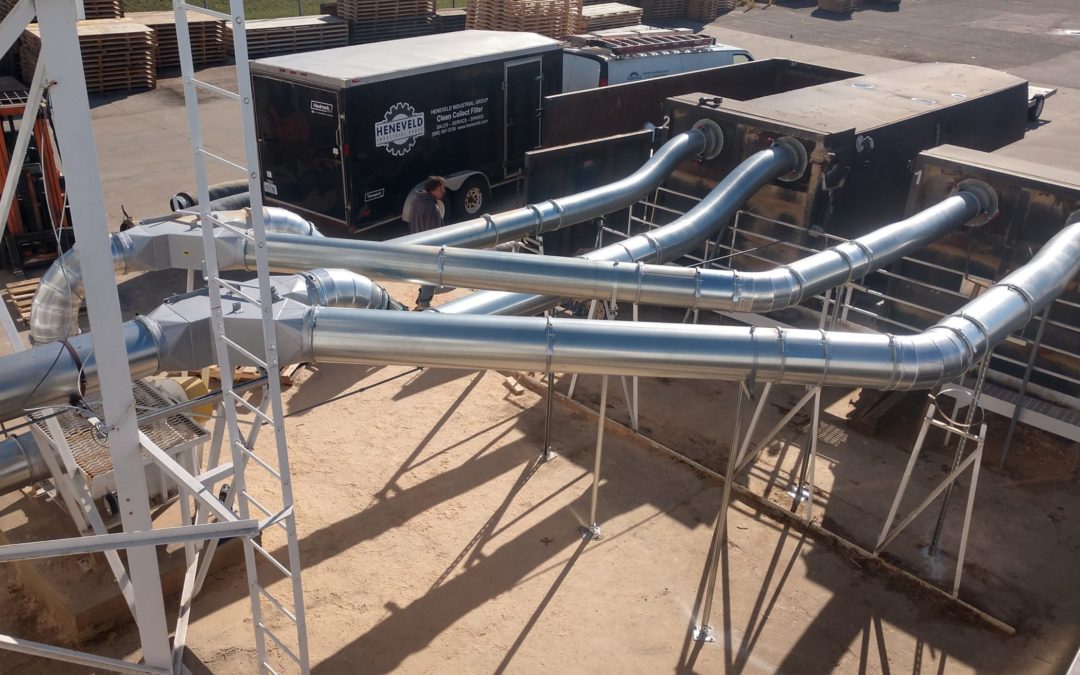Did you know duct design can affect your dust collector’s performance? In order to achieve top efficiency and safety, we have determined a few key factors when designing your dust collectors duct run. Our most important guidelines include:
Facility Layout
It’s important to know the workspace that you are working in, including other machinery to be avoided, ceiling height, electrical availability, etc. If you will be running multiple machines on the same duct run, you should put the machines that require the most cubic feet per minute of airflow closest to the dust collector. If you are needing help to find the required CFM of your machines, please call our team to assist!
Bends and Diameter Changes
Use minimal bends and elbows to avoid disturbing airflow. Straight and short runs are best since there will be less airflow resistance. If you are needing to decrease diameter, reduce as gradually as possible. If your dust collector has a suction port of 8”, run that diameter as long as possible before reducing the diameter to match it to the port of your machinery.

Y-Bends Are Best
If bends are necessary, using gradual bends are best. Sharp bends disturb airflow, creating more static pressure resistance and reduce airflow. Avoid 90-degree bends, and use Y-bends or lateral tees, which help reduce the amount of airflow and maintains the velocity that dust is able to move through the pipe.
Duct Diameter
Using correct duct diameters is important to avoid potential issues within the duct. If too small, your duct will quickly clog; however, if too large the airflow velocity will reduce becoming less efficient and leave dust settled throughout the duct. Larger diameter pipe sizes are ideal as they create less static pressure and allow for more air movement.
Static Pressure
Static pressure in dust collection is the resistance that air movement requires. Static pressure can occur from an elbow in a duct, dirty filters or how air enters the duct system. Low static pressure requires less horsepower and energy consumption by the exhaust blower, which saves you money.
Know Your Dust
Knowing the properties of the dust you produce is key to create an optimal duct run. One important property is dust density, which determines the dust carrying velocity. Having the correct dust carrying velocity ensures dust will get pushed out of the duct completely and not settling within the pipe, and potentially clogging it. This is especially important with combustible dust, as settled dust and clogged ducts create a higher risk for explosion or fire. Now that we know the dangers of dust moving too slow through the duct design, it’s also important to know that dust moving too quickly can also pose a problem. Dust moving too quickly through the duct design can cause abrasions on the duct walls from dust rubbing against the pipe.

Let Us Help!
Although it’s important to understand your duct design, Heneveld Industrial Group is trained and educated on optimal duct designs for your collector needs. Our team will design a system specific to your facilities layout, machinery, dust, and overall needs. We guarantee to design and install the optimal system for your dust collector, resulting in top performance and efficiency.
For questions on your current or future duct designs, or for more information regarding the importance of duct design, please contact our team today!


